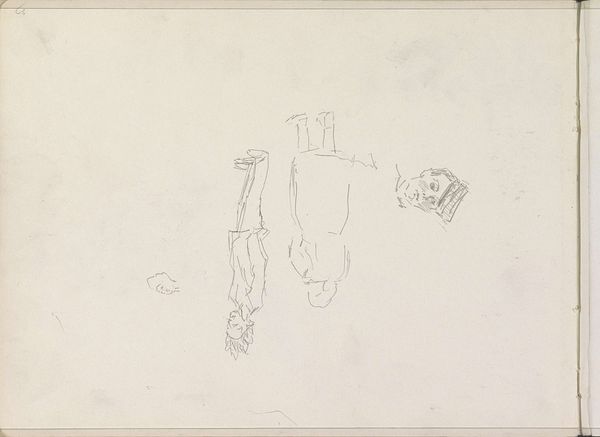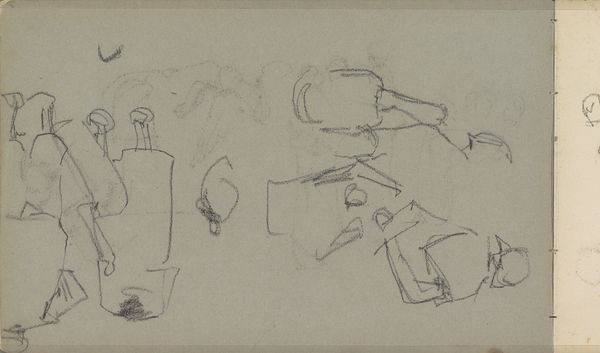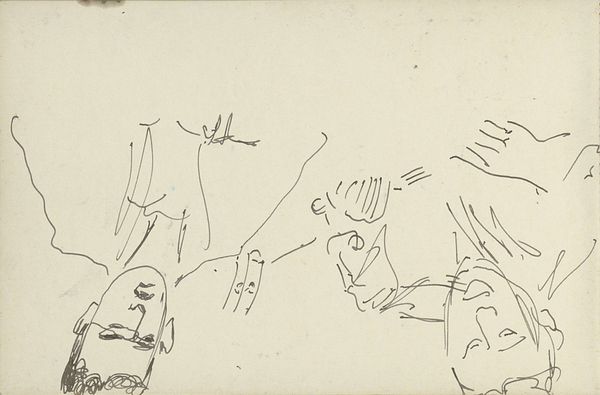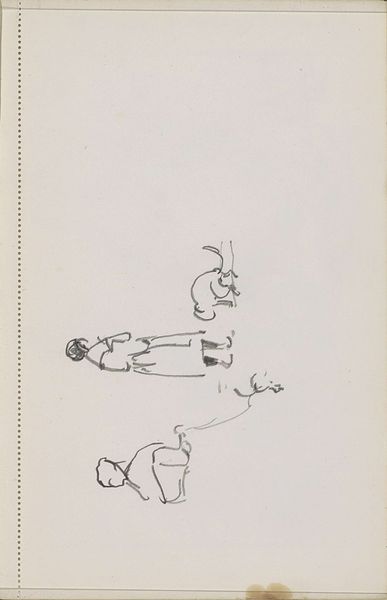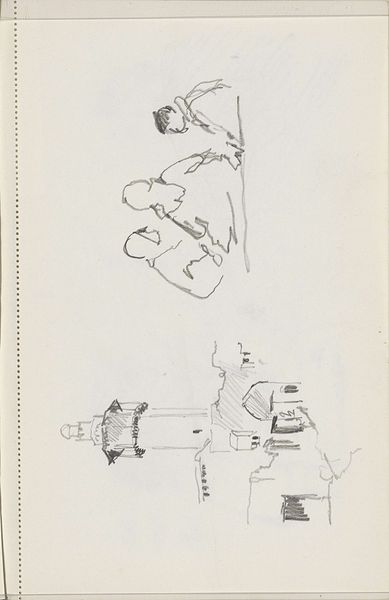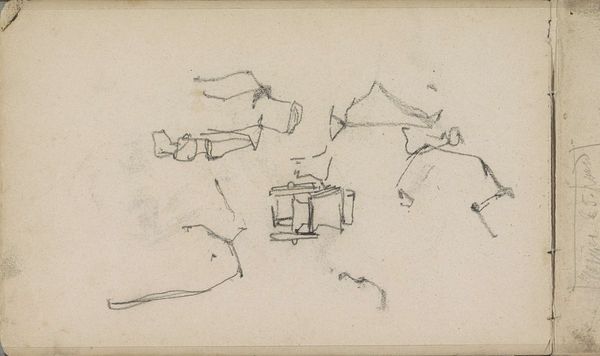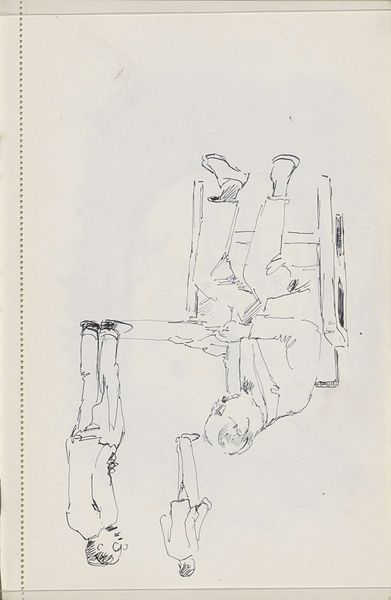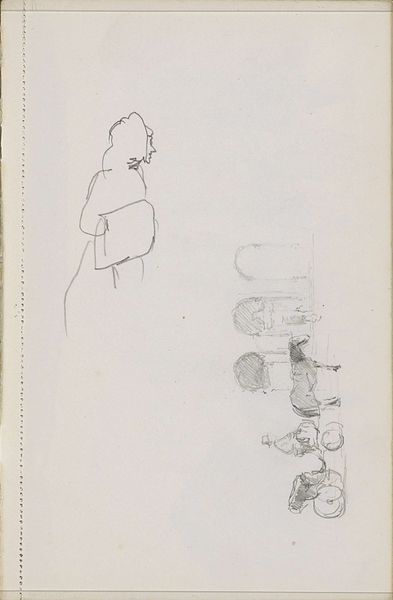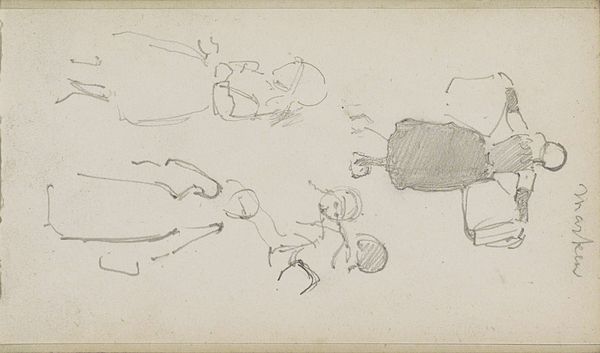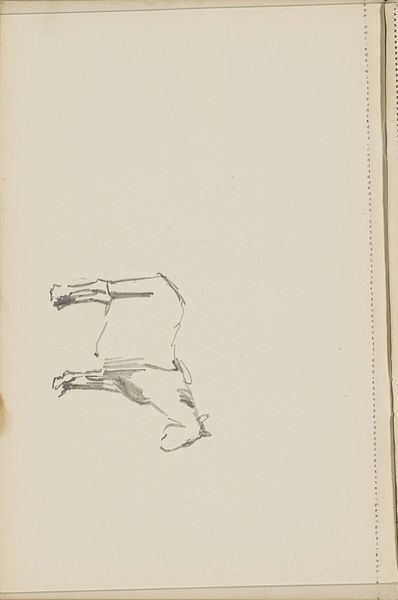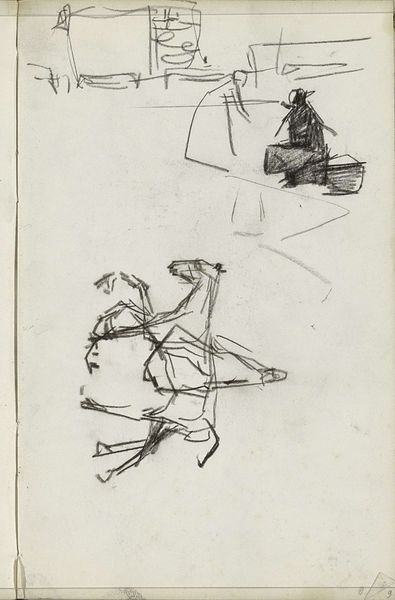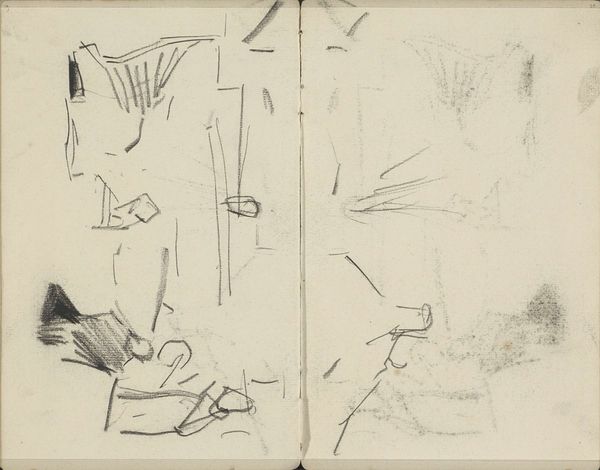
Dimensions: height 80 mm, width 120 mm
Copyright: Rijks Museum: Open Domain
Editor: Julie de Graag created this drawing, "Zes voorstellingen," sometime between 1878 and 1924. It’s an ink drawing on paper featuring six vignettes, a collection of items, or snapshots, that feel very intimate and domestic. What do you see in this piece, looking at it from a historical viewpoint? Curator: I see a reflection of the changing societal roles of women and children. De Graag created this piece during a time when genre painting was evolving, influenced by impressionism, which allows artists to examine these subjects. Notice how it captures domesticity - toys, a child sleeping, a woman working—perhaps sewing—which reflects typical themes related to a woman’s daily routine, their perceived function in society, and idealized depictions of early childhood. These are intimate views and suggest an implied, potentially gendered viewer, that are shaped by institutions such as the art market that influence what art gets produced and consumed. What strikes you most about the way De Graag represents these subjects? Editor: That's a fascinating take! I hadn't thought about it that way, but now I can see how even simple objects are part of a broader cultural narrative. For me, it's the sketch-like quality. It's not trying to be photorealistic, almost like a quick notation from daily life. Curator: Exactly, and how does that style of representation influence the viewer's relationship with the subject matter? Does it give it more intimacy or a detached clinical view? What statements do the politics of imagery suggest when childhood innocence and domestic productivity are paired in a single drawing? Editor: Hmm, I think the sketchiness does invite a bit of intimacy because it feels so spontaneous. But thinking about the cultural context, and especially the pairing you noted, that same style adds an edge because the scenes appear arranged, categorized. Curator: De Graag's style serves as a powerful lens for exploring these ideas. Her artistic choices actively negotiate the tension between private life and public image. I encourage everyone to contemplate how these artistic choices reflect or subvert prevailing socio-political norms around gender and childhood during this period. Editor: That really gives me a new perspective. It’s much more layered than just a simple drawing of everyday things. Thanks for the insight.
Comments
No comments
Be the first to comment and join the conversation on the ultimate creative platform.

